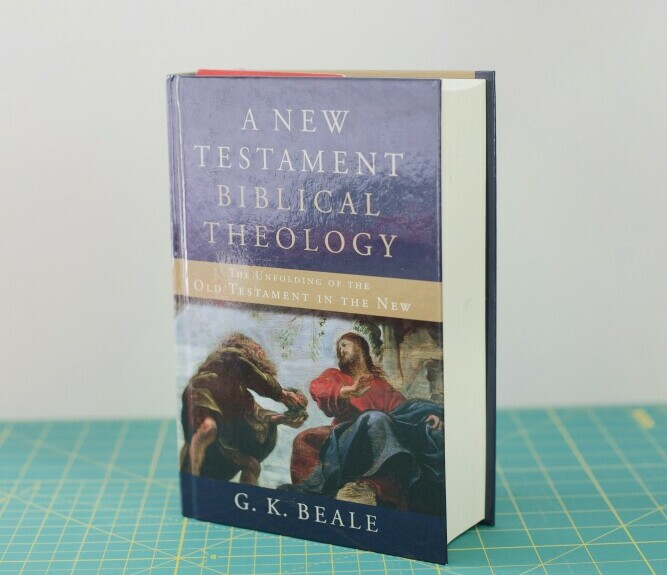NT Survey – The Structure Of The New Testament
The New Testament is a really important book for Christians. It has a lot of different types of writing and stories that help us understand our faith better.

(Avery Evans – unsplash)
In this section of the New Testament Survey Series, I’m going to be talking about the New Testament, a cornerstone of Christian scripture that comprises various literary forms ranging from historical accounts to apocalyptic visions. This isn’t just about ancient texts; it’s also about the foundational beliefs and culture that have shaped Western society and beyond.
You’re going to find out about why it’s crucial to get to grips with the structure of the New Testament. It’s not just to enhance scriptural literacy but to also appreciate its profound influence on literature, art, ethics, and law. Together, we will explore the New Testament, making it easier to grasp and revealing the deep spiritual stories within these texts.
Choose something that resonates with you, whether it’s the compelling stories in the Gospels, the early church’s growth in Acts, the practical wisdom in the Epistles, or the enigmatic prophecy in Revelation. Each segment offers a unique entry point into the world of early Christianity.
By the end of this section, you’ll have a clear picture of what constitutes the New Testament and why delving into its structure can yield more than just a chronological understanding of Christian doctrine and history—it can provide insights into the very fiber of societal values and ethical reasoning that continue to be relevant today.
 (geralt – pixabay)
(geralt – pixabay)
Exploring the History Behind the New Testament
The New Testament didn’t just appear out of thin air. It was shaped by historical events, cultural influences, and the dedication of early Christians to record Jesus Christ’s life, death, and resurrection. Let’s navigate together through this era, a time that’s as complex as it is fascinating.
Journey back to the first century, a period teeming with political unrest and spiritual longing within Judea. The Roman Empire casts a vast shadow over the Mediterranean, with its presence felt deeply in the daily lives of those awaiting the Messiah. In this charged environment, the New Testament finds its roots.
Key events leading up to the New Testament’s formation are as intriguing as the texts themselves. The historical Jesus and the movement sparked by his teachings lay the groundwork. After his crucifixion, his followers spread word of his resurrection, igniting the growth of early Christian communities.
It’s hard to overlook the influence of Hellenistic culture and Roman rule, as they provided a linguistic and political framework that enabled the rapid dissemination of Christian ideas. Greek, widely spoken across the empire, became the vehicle for the New Testament’s message. Hellenistic thought also offered a philosophical background from which early Christian theology could engage and expand.
By understanding this historical context, we pave the way for a better grasp of how the following segments of the New Testament weave together history, doctrine, and ethical instruction into a compelling narrative. This isn’t just about tracing back to ancient roots; it’s also about appreciating the living document that continues to influence billions today.
 (AliceKeyStudio – pixabay)
(AliceKeyStudio – pixabay)
Drawing Meaning from the Text
Now that we’ve journeyed through the fundamental, it’s clear that this isn’t just a random collection of ancient texts; it’s a carefully woven narrative with diverse literary styles and profound themes.
Each section of the New Testament—from the Gospels, Acts, Epistles, to Revelation—plays an integral part in the overarching message of Christianity. The variety within its pages is not there by chance; it reflects the complex nature of human experience intersecting with the divine.
Understanding the structure isn’t simply an academic exercise. It’s a portal to gaining a nuanced appreciation of the New Testament’s teachings. It offers a framework to interpret the context of each book, leading to richer, more informed insights into its messages.
Whether you’re seeking spiritual growth, historical knowledge, or both, the New Testament holds value. It beckons readers to consider the perspectives of its various authors and the realities of its early recipients.
The synthesis of historical events, theological discourse, and moral guidance found within these pages has been a cornerstone for countless individuals and societies through the ages. It speaks to the enduring relevance of the New Testament that continues to resonate today.
It’s important to remember that your exploration of the New Testament doesn’t have to end here. Choose something that resonates with you from these scriptures and let it guide you on your own path of discovery and understanding.
Thank you for taking the time to walk through the structure of the New Testament with me. I really hope you’ve found value in this overview and feel inspired to delve deeper into the timeless narrative and lessons these ancient texts have to offer.
 (AgnieszkaMonk – pixabay)
(AgnieszkaMonk – pixabay)
In This Series
An Overview Of The New Testament
The Historical Background Of The NT
Key Themes In The NT
The Gospel Of Matthew – Taking A Closer Look
Exploring The Gospel Of Mark
The Unique Features Of The Gospel Of Luke
The Theology Of The Gospel Of John
Understanding The Acts Of The Apostles
Paul – His Life, Ministry, And Epistles
Understanding The Book Of Revelation




